The Truckee River drains from Lake Tahoe on California’s wooded border toward Pyramid Lake in Northern Nevada’s desert basin. Pyramid Lake, where the Truckee crouches to its end, is a remnant of the prehistoric behemoth Lake Lahontan that, some nine thousand years ago, had most of Nevada under nine hundred feet of icy water. The Truckee River is what keeps the Pyramid Lake basin from turning into Black Rock Desert and breathes continual life into petrified Ichthyosaur skeletons the beachside petroglyphs of the ancients. The river, once abundant with native trophy trout, now often only brings swimming filets to hand.
The ecological diversity of the Truckee does still hold some treasure: the elusive stream- form Lahontan cutthroat trout, which has survived by extreme caution, lies in deep pools throughout the basin. This is what Vic and I, armed to the teeth with flies, tippets, waders, and good boots, set out to find. We are after native trout that, unlike wild or stocked, occur naturally within the watershed. The wild trout, much like its farm-raised cousin the stocker, owes its existence in Nevada to the hand of man. Trout like the German Brown or Brook of the East are typically wild in the West and, through supreme predation, threaten entire populations of native species. Stocked varieties are usually hybridized versions of Rainbow trout – this fish was native to many drainages in the West and, in the time of great money and sportsmen like Rockefeller, Carnegie, and Vanderbilt, was considered the ultimate sport fish. It was moved east, genetically altered, and moved back west as railroads brought leisure sportsmen cross-country. The native trout is the ultimate goal for Vic and I; it has survived in these waters since the time before man stood on his hind legs. It does not rely on the hand of man unless to protect it from industrial progress, which is often the case. To hold a native trout in hand, momentarily before watching its smooth flanks fold back into the stream, is to touch a world beyond our own existence.
We head east on Interstate 80 from Reno, long into the desert country, and fish a portion of the day before I notice Vic has faded from view. With no fish yet in hand, I try numerous flies and exhaust a stretch of river from canyon wall to wall. As I fumble a monofilament line through the eye of yet another hook, a silence approaches at the opposite bank. There, in a sandy break of sagebrush, are standing a half dozen wild horses. Their colors are amazing, like the painted ponies of the high plains, with oblong patches of stark white nested in shades of brown. They notice me, collectively, and I am capable of nothing but presence. These horses are wild, not native. Ranchers travel into the desert in heavy-duty pickup trucks and drop bails of hay every few miles to keep the population steady. As beautiful as they are, they do not belong in this environment; they are completely dependent on man for their survival, but to what end? A passing honk on the eastbound 80 above the canyon wall sends the team back into the hills, leaving only hoof prints sunk deep into the bank.
The Truckee River’s terminus, Pyramid Lake, many first-time visitors say, looks like a lake on the moon. Bare and gray mountains level off into ominous, if not deliberate, outcroppings of rock that pock the lake’s edge. Like much of life in the desert, there is a finality to Pyramid Lake that doesn’t include human intervention. There is no outlet save for evaporation and the possibility of a deep, vermicular bed. With no fish, I am freed to think about the constant passing of water to the lake on the moon and my last trip there.
Vic was with me then, too. Winding through the final stretch of State Route 445 in approach of the lake appeared a little convenience store on the left-hand side of the road. There, in the window, was an old Paiute man with long braids on each side of his head, a native. He quietly tied flies to sell to visiting fishermen and stared beyond his hands and work, fixed to the linoleum floor. “What flies are hitting today?” I asked. I just wanted to hear his voice, to exist in the unknown that is the man at the fly-tying desk who stares at the floor and unspools life’s mysteries but never speaks them. A woman popped up from behind the counter before he could speak and tired to sell me a Coke. “I’ll get a Mt. Dew,” said Vic, the wild Nevadan. I had one of my finest days of fishing on that trip – a very beautiful, very native Lahontan cutthroat.
As the sun sets beyond the canyon that the Truckee has sculpted in sidewinding perfection, trout begin to break the water’s surface. Their backs shine, just for a moment, in the lingering light. Vic lands a good-sized Rainbow trout, studies it for a moment, and then releases its gleaming, slivery body back into the river. It takes until the sun is completely out of view before I realize the trout are not feeding on the terrestrial hatch - but on aquatic emergers, the adult fly emerging from the river but captured in surface film. The sky’s final light is orange and rebounds off the shale walls of the canyon many times over. In this dying moment, the trout selectively rush the stuck insects while I stand waist deep in the river, fooled. I am amazed that this beautiful and longing desert, this passing water, has been just over the state line from where I was born and raised. My empty hands, perhaps, are proof that I don’t belong here; that I have just been planted here, waiting for the next great migration.

Many of these streams and rivers cross artificial boundaries, established over a century ago in the West, that we call state line. The trout don’t know their native movement skirts state law and yet, those laws make all the difference. We have, historically, imposed a near extinction on these wondrous creatures only to force state and federal mandates to save them, hyper- breeding them back from the brink of oblivion. Further, we’ve regulated their existence to fractions of ancestral waters. By damming up much of their ancient waterways, we have relegated their existence, their freedom to live and be caught, to short “trophy trout, special regulation” sections of river. We have done this for our own survival; our need for economically viable water and power is sourced from containing such waters. To be sure, neither Vic nor I have landed a Lahontan cutthroat in the lower Truckee desert region. Rainbow and Brown, wild and stocked, trout have come to hand and produced many smiles across the Truckee but, perhaps, we are now chasing a ghost.
Back west on Interstate 80 toward Reno, Vic and I talk. The wild Nevadan is a strange breed; he’s been forged by this state but, ultimately, like me, his roots are measurably deep. “Why would anyone want to fish west of Reno,” he says. “This is Nevada. All these Californians (he means me) want to move here and act like they’re not fishing in a desert.” Fishing in a desert – I hadn’t thought of it like that. Franklin Delano Roosevelt, not the legacy sportsman of his fifth cousin, Teddy, thought of it like that. “It is desert.” FDR wrote in 1938 from the platform of his train traveling through Imlay, “pretty good desert.”1 On Nevada’s trout, he continued, “I don’t think I will get anything that tastes better to eat than Nevada trout,” which, we can only hope, is the Lahontan cutthroat. To catch a stream-form Lahontan this far into the desert, one would have to look in the least likely of places, where generations of them could live untouched to wait for an almost humanless presentation of a fly. The desert does seem like the perfect place. The unbridled secret: with over ninety percent of arid Nevada still unpopulated, native trout are bound to be holding.




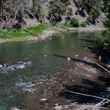
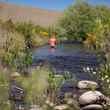
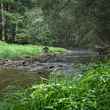
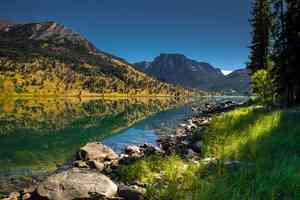


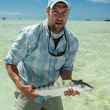




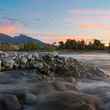
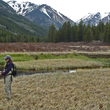


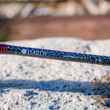
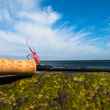




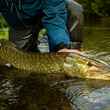
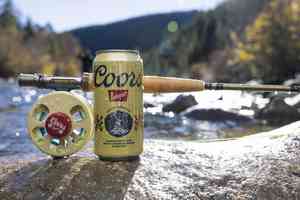

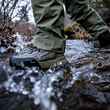
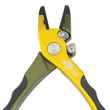
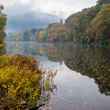
Comments